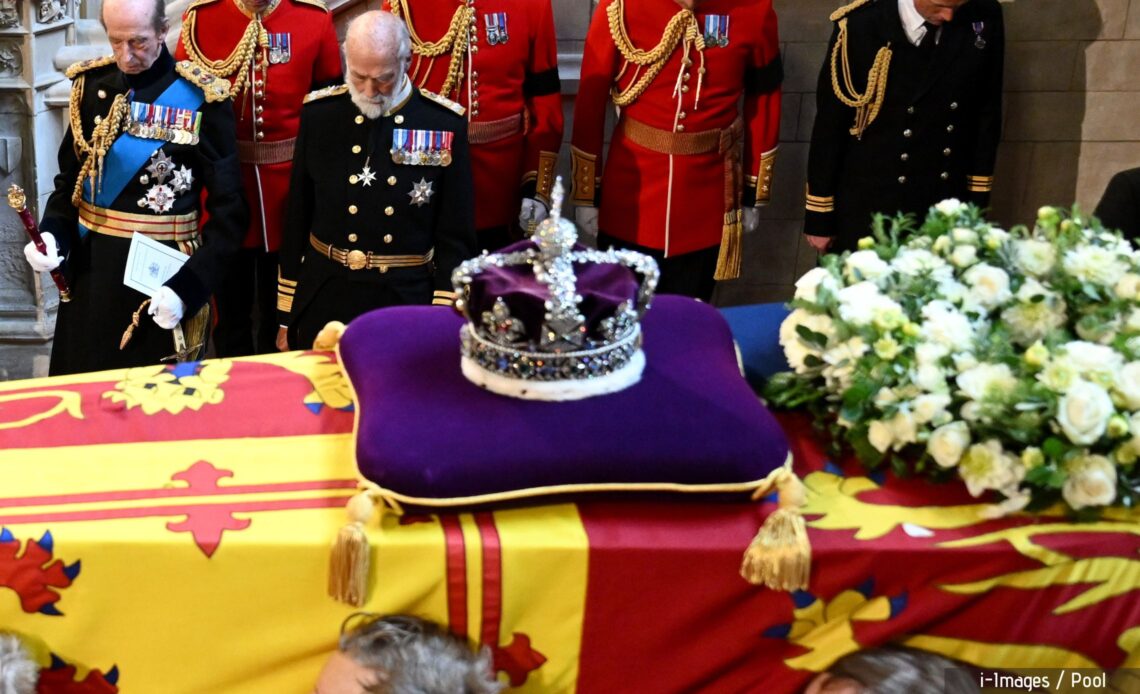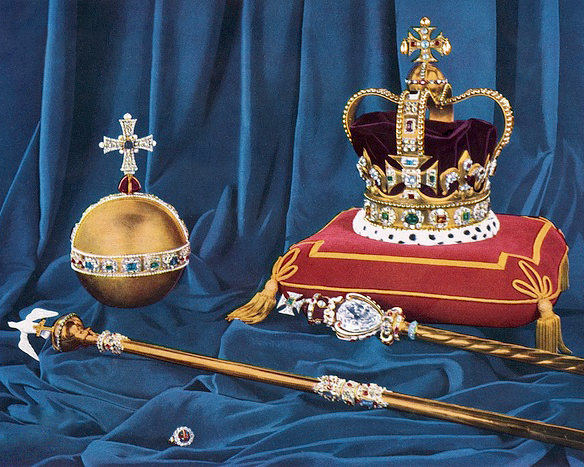
Queen Elizabeth II’s coffin is currently Lying-in-State at Westminster Hall for four days to allow the public to pay their respects. She will remain there until 6:30 am on Monday, 19 September. Resting on top of the coffin are three symbols of the monarchy which hold great significance.
The Queen’s coffin has been draped in the Royal Standard, the monarch’s personal flag. The Royal Standard is flown at royal residences and on the royal yacht when the monarch is in residence. The Imperial State Crown, the Sovereign’s Orb, and the Sovereign’s Sceptre are now resting on the Standard.
The Imperial State Crown was placed on top of her coffin at Buckingham Palace, and remained there throughout the procession to Westminster Hall. This particular crown dates back to 1937 when it was created for her father’s coronation. The design is based on that created for Queen Victoria for her 1838 coronation.
It features the Stuart Sapphire, a 104-carat sapphire that King James II took with him after fleeing in the aftermath of the Glorious Revolution in 1688 that was later purchased by King George III. St. Edward’s Sapphire is an octagonal, rose-cut sapphire that sits in the uppermost cross, and the Black Prince’s Ruby, a 170-carat ruby that was given to the Black Prince in 1367. The Cullinan II diamond, a 317-carat diamond is also included. In total, the Imperial State Crown has over 3,000 gemstones.

The Sovereign’s Orb is a gold globe with a cross above it, and represents the monarch as God’s representative on earth. It was created for King Charles II’s coronation in 1661, and has 375 pearls, 365 diamonds, 18 rubies, 9 emeralds, 9 sapphires, 1 amethyst, and 1 glass stone.
The Sovereign’s Sceptre with Cross represents the monarch’s temporal power. This sceptre is 92 cm long and weighs 1.17 kg. While the diamond in the sceptre, the Cullinan I- a 530-carat diamond, was placed in 1910 for King George V, the gold sceptre itself also dates back to 1661.
When not used for a coronation or sovereign’s funeral, the Crown Jewels are on display at the Tower of London.

